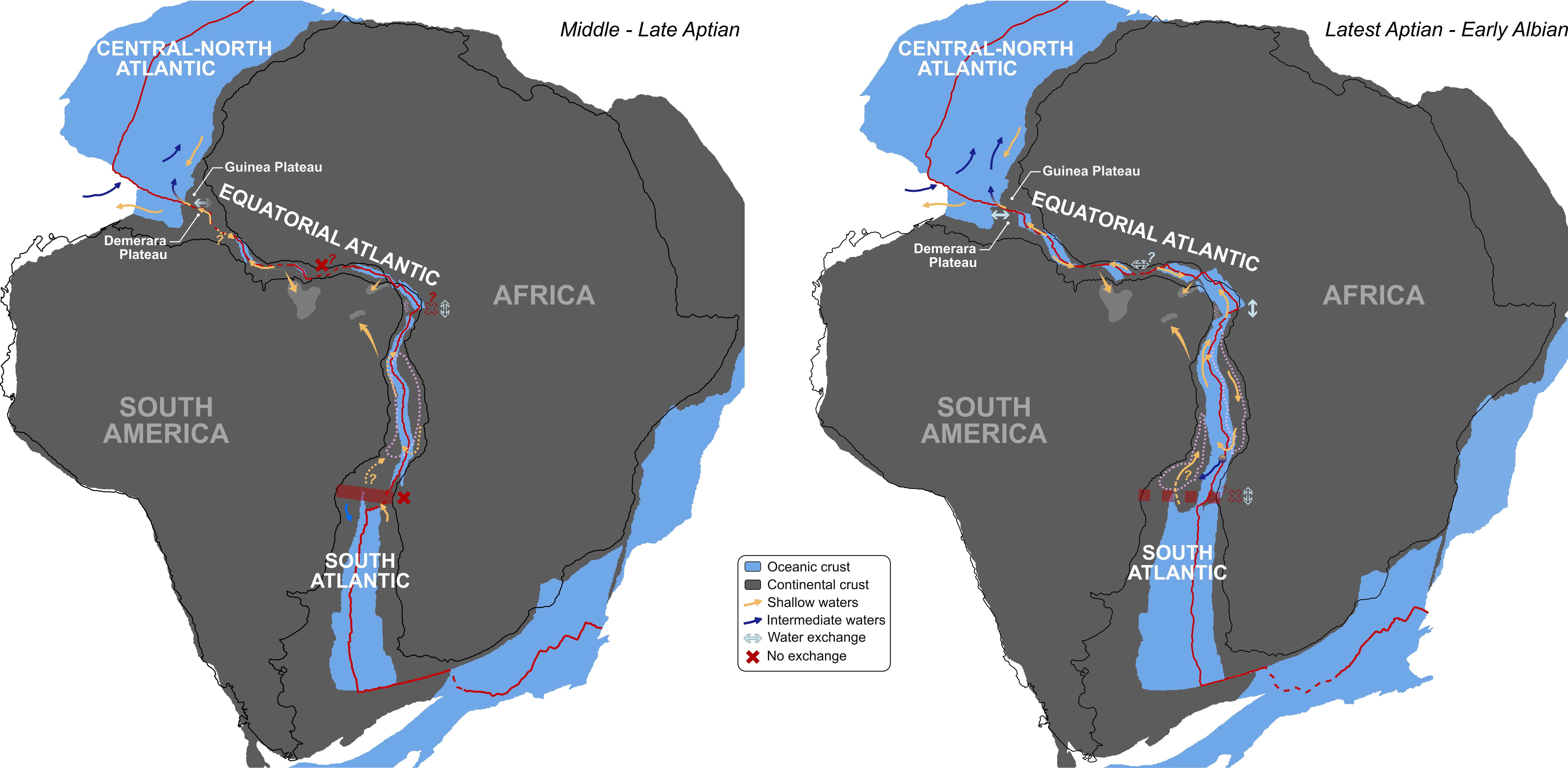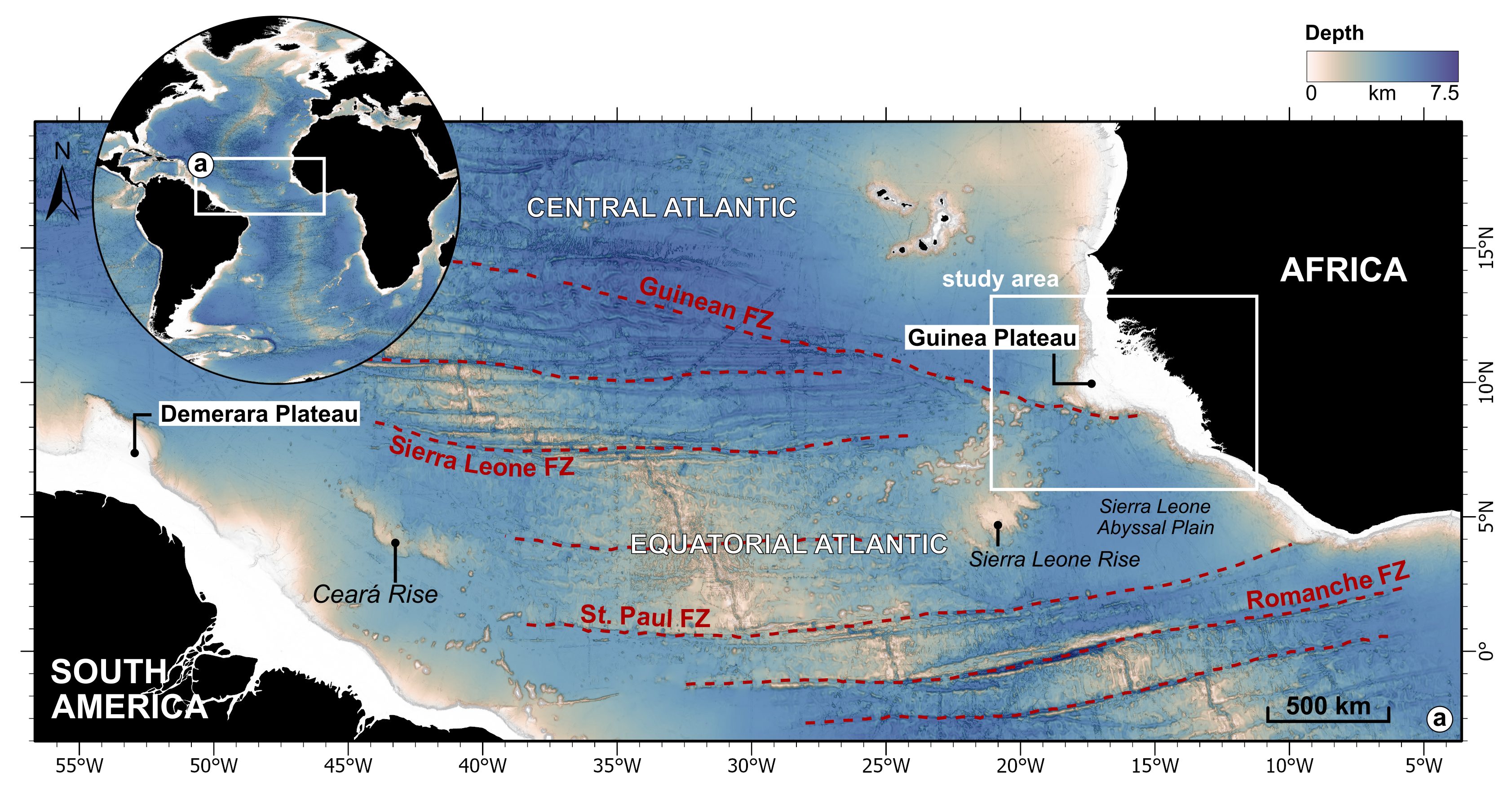The Atlantic Ocean was formed by the dramatic break-up of the supercontinent Pangea, splintering our planet into drifting landmasses that would become the continents we know today. Now, the imprint of giant underwater mud waves found near West Africa is providing a key insight into how this world-making event unfolded.
Scientists at Heriot-Watt University in Edinburgh have discovered massive underwater sediment waves made of mud and sand around 400 kilometers (248 miles) off the coast of Guinea-Bissau using seismic data and drill cores gathered in the 1970s.
Located 1 kilometer (0.62 miles) below today’s seabed, the wavy sediments were formed during the Equatorial Atlantic Gateway – the seaway that was created when South America and Africa split apart, giving birth to the modern Atlantic Ocean – and they show how immensely powerful this event was.
“One layer was particularly striking: it included vast fields of sediment waves and ‘contourite drifts’ – mud mounds that form under strong bottom currents. Imagine one-kilometre-long waves, a few hundred metres high: a whole field formed in one particular location to the west of the Guinea Plateau, just at the final ‘pinch-point’ of the separating continents of South America and Africa,” Dr Uisdean Nicholson, study author and geologist at Heriot-Watt University, said in a statement sent to IFLScience.

This diagram gives an idea of how the Equatorial Atlantic Gateway formed between Africa and South America.
Image courtesy of D Duarte et al/Heriot-Watt University
“They formed because of dense, salty water cascading out of the newly formed gateway. Think of it like a giant waterfall that formed below the ocean surface,” he explained.
This happened because the water to the north was much fresher, while the water to the south was super salty. Before the event unfolded, tons of salt had built up in the South Atlantic. When the gateway opened, the freshwater rushed in, and the heavier, saltier water was pushed out to the north. That movement created huge underwater waves, like a deep-sea waterfall in motion.
The new research helps to pinpoint when the Atlantic started to form. Most previous research indicated the Equatorial Atlantic Gateway opened between 113 and 83 million years ago, but the sediment waves show that the opening started much earlier, around 117 million years ago. The researchers go on to posit that the gateway became wider and deeper in a second stage that started around 113 million years ago, allowing a more continuous exchange of water.

Map of the Equatorial Atlantic showing the study area near Africa’s West Coast.
Image courtesy of D Duarte et al/Heriot-Watt University
Coincidentally, this occurred during the Mesozoic Era, known as the “Age of Reptiles” when the world was ruled by dinosaurs and other reptiles, like pterosaurs (flying reptiles) and plesiosaurs (swimming reptiles).
The research has implications for the future as it shows the complex interactions between oceans, carbon cycles, and climate regulation – crucial knowledge for understanding how our planet might react to rising greenhouse gases and the pressures of human activity.
For a long time before 117 million years ago, Earth was gradually getting cooler. During that period, heaps of carbon was being stored in what were probably lake-filled basins near the Equator in the Atlantic region. But starting around 117 million years ago and lasting until about 110 million years ago, the planet began to warm up significantly.
Scientists believe this sudden warming was likely caused by the first connection between ocean waters and these basins. As seawater flowed in through this new opening, it changed the environment. At first, this reduced how effectively carbon could be buried, and that shift likely played a major role in the planet’s warming.
“Understanding how past ocean circulation influenced climate is crucial for predicting future changes. Today’s ocean currents play a key role in regulating global temperatures, and disruptions, such as those caused by melting ice caps, could have profound consequences,” added Dr Nicholson.
The study is published in the journal Global and Planetary Change.
Source Link: 117-Million-Year-Old Sediment Waves Near Africa Show How Atlantic Ocean Was Formed